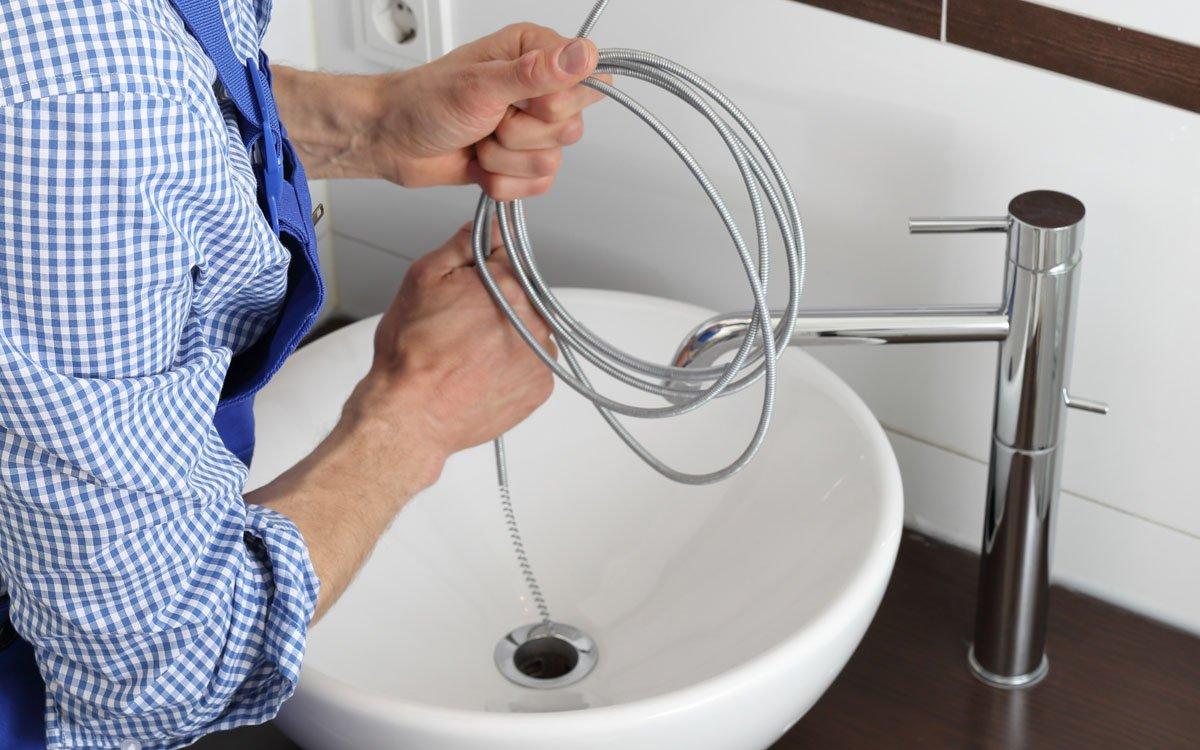Importance of drain cleaning before summertime
With a busy summer schedule ahead, now is the perfect time to start ensuring that you don’t wind up with a significant sewer or drain issue. These tips will help you look for potential plumbing problems before they wreak havoc on your home.
By: Sylvia Slezak | Apr 2020
 Plumber cleaning drain
photo by csp_RioPatuca
Plumber cleaning drain
photo by csp_RioPatuca
Have you ever wondered why drain cleaning is such a necessary part of the change in seasons? The main purpose of spring drain cleaning is to check for winter damage. During the winter months, low temperature has the potential to create plumbing havoc not only on the outside components, but on the inside ones as well.
While most parts of pipes, hoses, and sprinklers can withstand low temperatures, they are not immune to freezing. Exposed exterior pipes tend to freeze in cold temperature. A thorough check in all parts is necessary to prevent leaking and clogging issues.
Preventing Plumbing Problems
Inspect the Water Heater
At the beginning of winter, it is quite common for people to adjust their water heater temperature to the highest setting in order to compensate for the cold winter. But when the ambient temperature begins to slowly increase as it approaches a change of season, you must lower the setting. By doing that you not only avoid scalding, you also increase the longevity of the appliance.
Flush the Sinks
During cold winter weather, water inside the drain pipes (or the p-traps in all water fixtures) can possibly freeze, especially when you don't winterize outside pipes and plumbing fixtures. As freezing water expands, and it may cause damage to the pipe. Do a simple test by flushing an amount of water to see if it drains quickly. Clogging is a sign of slow draining. If it drains too quickly or much quicker than usual, there can be a leaking point. Repeat the test in all water fixtures inside the house. A sink trap that is exposed to sub freezing temperatures can freeze solid, and split. You won't notice the damage until you reactivate and use the sink.
Test the Toilets
The easiest way to make sure your toilets are working well and don't leak is to place a few drops of food coloring inside the tank (do not flush) and wait thirty to sixty minutes. If the water in the bowl changes color, then the toilet is leaking. In order to avoid costly water bills and wasted water, your best course of action is to call a plumber to figure out the actual culprit and fix the issue. Constant sudden changes of temperature can damage the drain pipe or at least make it more susceptible to damage. Toilets located outdoors in cabanas, or inside summer homes, are particularly in danger of freezing during the winter. If you forget to winterize such toilets, be prepared to repair them.
Check the Sump Pump
Not all homes have or are required to have a sump pump, but for those that have it, it is important to check it, especially at springtime to make sure it is functioning properly. The most efficient way to check on your sump pump is by pouring a bucket of water into the sump pit. If the sump pump works, it should activate, remove the water, and automatically turn off. Slow drainage can be a sign of a bigger problem either in the drain pipe or the pump itself; maybe even both. An exposed or neglected sump pump can get clogged with sediment, debris, or frozen solid over the winter and damaged beyond repair. Either way, this is a job best left to a professional plumber. A torrential spring rain, flooded basement, or high water table, are the wrong time to find out your sump pump is broken.
Inspect Hose Bib and Faucets
Go outside and inspect every faucet and hose bib for visible cracks, as well as drips and leaks. Your faucets and hose bibs are vulnerable to freezing and cracking during the winter season. Cracked or leaky faucets can cause damage outside of your house, and can even threaten the house’s foundation if they escalate.
Protect the Sewer Line
Opening, visually inspecting, and water testing any outside sewer trap is important, especially if the pit cover was not installed air-tight. Make sure they are not frozen or damaged in any way. If you suspect any form of damage, call a professional to repair the problems. Before spring starts, make sure that a professional inspects and treats your sewer lines before roots try to block them. Springtime usually means that trees are no longer dormant, and their roots will seek out the nearest water source available, including nearby underground sewer lines.
Resist DIY Drain Cleaning
You know those unclogging products you often see on the grocery store shelves? Using a chemical drain cleaner can result in more significant problems down the road. While those harsh chemicals can temporarily clear your drain — they can't fix the issue at hand. In fact, beyond the quick fix, these chemicals are also harmful to the environment and should be avoided altogether. Many DIY methods can cause sewage or water backup in other areas of the house. It’s always better to have a professional find the source of the problem and provide a solution for it.
Since plumbing components in your house are all interconnected, an isolated damage can turn into widespread issues. Visit CityOf.com to find a professional plumber in your area to help you with drain cleaning before it turns into an unsolvable situation.









